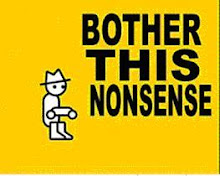(808-827)
These lines from Beowulf exemplify the essence of its story. They represent the greatest aspects of the story, all rolled into one short section. It has a battle between Beowulf and a powerful monster, it has kennings, it has alliteration, it has strong imagery, it has religious themes, and it’s an important point in the plot. It continues themes that are shown through the entire story, and is something that the rest of the story references back to this point.
In terms of language, this section of the story reinforces previously used literary devices and language. Like the rest of the story, this part uses kennings and alliteration. The alliteration shows up in quotes like “sinews split,” (816) and “under the fen-banks, fatally hurt,” (818). The kennings show up in quotes like “Hygalec’s kinsman,” (812) which is a simple one that refers to Beowulf, and “he who had harrowed the hearts of men,” (808) referring to Grendel. These two devices give the story a more poetic feel.
More important in this section, however, is the imagery that appears throughout the story. It’s particularly powerful here, as shown by the quote, “a tremendous wound appeared on his shoulder. Sinews split and the bone-lappings burst,” (816) which is quite powerful. It makes the reader feel as if they’re there, actually witnessing Beowulf ripping Grendel’s arm off, which is a great effect for a story to achieve.
The other primary thing this part of the story achieves is the reinforcement of previously introduced themes. One such theme is the theme of religion and how it aids Beowulf. It says, “… and had given offence to God,” (810) implying that God had some part in Beowulf’s victory. It also continues the theme of courage and strength in battle, where it says “Proud and sure, he had purged the hall, kept it from harm; he was happy with his nightwork and the courage he had shown,” (826). This quote shows how Beowulf’s victory makes his courage apparent, and the fact that they mentioned it at all clearly shows that it’s important.
This passage was chosen because of its powerful impact on the reader and impact on the story. As was mentioned earlier, it is referenced several times later in the story, cementing its importance throughout the rest of the story. It also has a great impact on the reader. As mentioned earlier, the imagery makes this section come to life for the reader, making them feel as if they’re really there, a powerful impact. In summary, this section of Beowulf uses its literary devices to reinforce previous themes and draw the reader in, which is what makes it powerful.

No comments:
Post a Comment